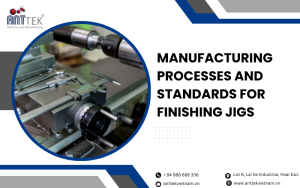Powder Coating for Mechanical Components: The Gold Standard for Achieving Optimal Quality
Powder coating is a popular surface treatment method in the mechanical industry, providing protection against corrosion, impact, and other environmental factors. To ensure the quality and effectiveness of the coating, adherence to powder coating standards is critical. Below are the key standards that mechanical components must meet when using powder coating.
Surface Preparation Standards
To ensure good adhesion of the coating, surface preparation is the first and most crucial step:
- Surface Cleaning: The surface of the component must be free from oil, grease, dirt, rust, and other contaminants. This process can involve methods such as chemical cleaning (acid, alcohol), sandblasting, or shot blasting to clean the surface. The goal is to achieve a completely clean, smooth surface with no impurities that would hinder the adhesion of the coating.
- Pre-treatment: Components may undergo processes such as phosphating or chromating to enhance the adhesion and corrosion resistance of the coating.
Coating Thickness Standards
The thickness of the powder coating is an important factor, affecting the protection and durability of the mechanical component. Typical standards include:
- Coating Thickness: The thickness of the powder coating is usually measured in micrometers (μm). For mechanical components, the standard thickness typically ranges from 60 to 120 μm, depending on the application and operating environment of the component.
- Thickness Testing: The thickness of the coating is checked using specialized measuring equipment such as magnetic thickness gauges. International standards ISO 2360 and ASTM D7091 are commonly applied to verify and confirm that the coating thickness meets the requirements.
Adhesion Standards
The adhesion of the powder coating to the surface of the mechanical component determines the lifespan and protective performance of the coating. Standard testing methods include:
- Cross-cut Test (ISO 2409): A grid pattern is cut on the coated surface, followed by applying adhesive tape and pulling it off. The adhesion of the coating is assessed based on the level of peeling at the cut points.
- Pull-off Test (ASTM D4541): Used to determine the force required to separate the coating from the metal surface, typically applied in cases requiring high adhesion.
Environmental Resistance Standards
The powder coating must provide excellent resistance to environmental conditions such as temperature, humidity, UV light, and chemicals. Common standards include:
- Heat Resistance: Tests the durability of the coating at high temperatures. The coating should not deform, discolor, or peel after exposure to temperatures ranging from 150°C to 200°C for a specified period.
- Corrosion Resistance: Tested using salt spray methods. The coating must withstand a certain period of salt spray exposure (usually 500 to 1000 hours) without rusting or severe damage.
- UV Resistance: This standard is particularly important for components exposed to sunlight. The coating must retain its color and not fade after prolonged exposure to UV rays.

Surface Smoothness and Finish Standards
To ensure both the aesthetics and protective quality of the coating, the surface must meet certain smoothness and finish requirements:
- Surface Smoothness: The coating should be uniform, free from defects such as air bubbles, scratches, or rough surfaces.
- Defect Inspection: Optical or manual inspection methods are used to detect surface defects in the coating.
Color and Color Fastness Standards
The color and durability of the powder coating are critical in maintaining the aesthetics and branding of the product:
- Color Testing (ISO 3668): A color meter or direct comparison with a standard sample is used to ensure uniform color across the entire surface of the component.
- Color Fastness Testing (ISO 105-A02): Artificial weathering tests (Weatherometer) are performed to assess the coating’s ability to retain its color after exposure to harsh environmental conditions for a specified period.
Powder coating standards for mechanical components not only ensure the aesthetics and durability of the product but also optimize their performance and lifespan. To meet these requirements, selecting a high-quality coating supplier, following proper surface preparation procedures, applying the correct coating techniques, and conducting standardized testing are essential.
Anttek Vietnam – Diverse Range of Machining and Powder Coating Services
Anttek Vietnam is proud to apply high-quality powder coating standards that meet the most stringent customer requirements. With modern coating processes and advanced production lines, we ensure smooth, durable, and scratch-resistant coatings. Anttek products with powder coatings not only offer superior aesthetics but also resist corrosion, withstand harsh environments, and ensure long-lasting durability. We are committed to delivering internationally certified products with a wide variety of colors, suitable for all usage needs.
 For more information, please contact:
For more information, please contact:
Factory: Lot 6, Lai Xa Industrial Park, Kim Chung Commune, Hoai Duc District, Hanoi, Vietnam
Hotline: +84 988 688 336
Email: truong.nx@anttekvietnam.com
Website: https://anttekvietnam.vn

















